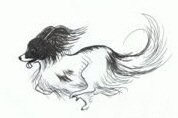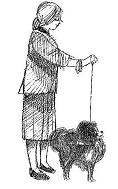

Ownership… The Papillon is a tough little dog that, while said to be friendly and highly sociable, can also be a firm protector of family property from strangers. But things could be worse, since a neglected and ill-mannered Papillon can be yappy, and not able to be housetrained. Papillons may not be good for families with small children under six years. Adult dogs are hardy, but it is not so for the puppies, who can be seriously injured by curious kids with rough play. They are, however, at home among families with older children and among elderly people who want companion dogs. They also make effective therapy dogs. The quirk to owning a Papillon is that, compared to other breeds of dogs, the pure-bred Papillon is often zealously protected and tracked by its breed club. Anybody keen on a puppy may have to cool their heels in a waiting list since litters are small (usually two or three pups) and breeders will want to take their time to choose the right owners for their puppies. Breeders will hold on to the pups until 14 or 16 weeks of age. | Grooming…   Grooming needs are not great although regular brushing is important. The fur under the pads can grow extensively, so this hair will need to be trimmed to give the dog better footing. The fur from the hock to floor on the leg/pastern can be trimmed to give a neater appearance. Papillons hold the distinction of not having the usual 'doggy odour' that some dogs tend to have. The breed does shed, and bitches do so after each season, unless spayed, while dogs do so once per year. Regular brushing will then come in handy. Puppies at around 12 to 14 weeks have a fluffy coat, then they tend to go through the 'ugly duckling stage' and become more or less hairless, and leggy. At around 5 months, these dogs start growing their adult coat, which may take up to two years to fully develop into that of a grown adult. Ear fringing can take up to 3 years.
|
 |
This breed would do well for an owner interested in obedience, agility and other disciplines. (Re-produced by kind permission of Mrs. J. Terry (Babrees Papillons) |
 Ease of grooming - high
Ease of grooming - high